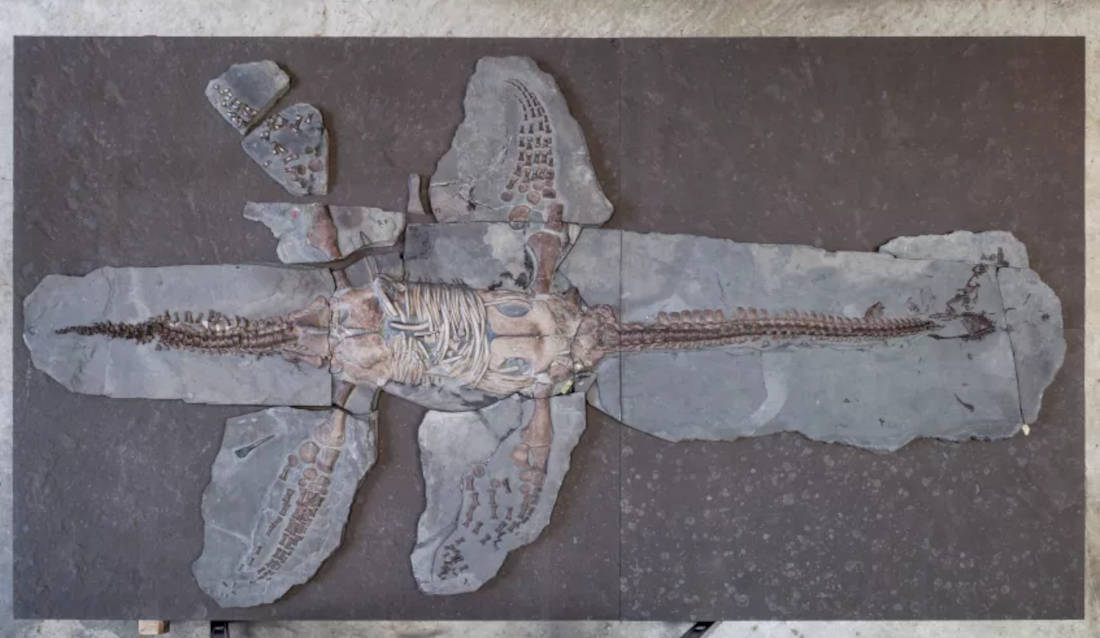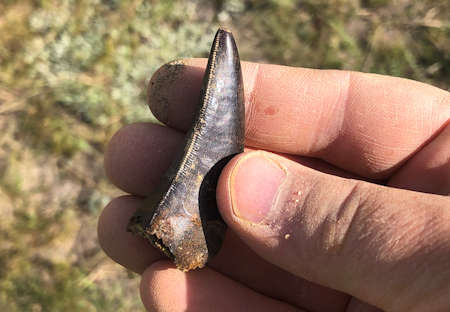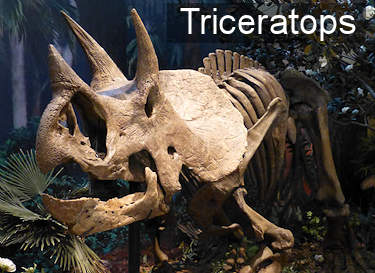Paleontology News
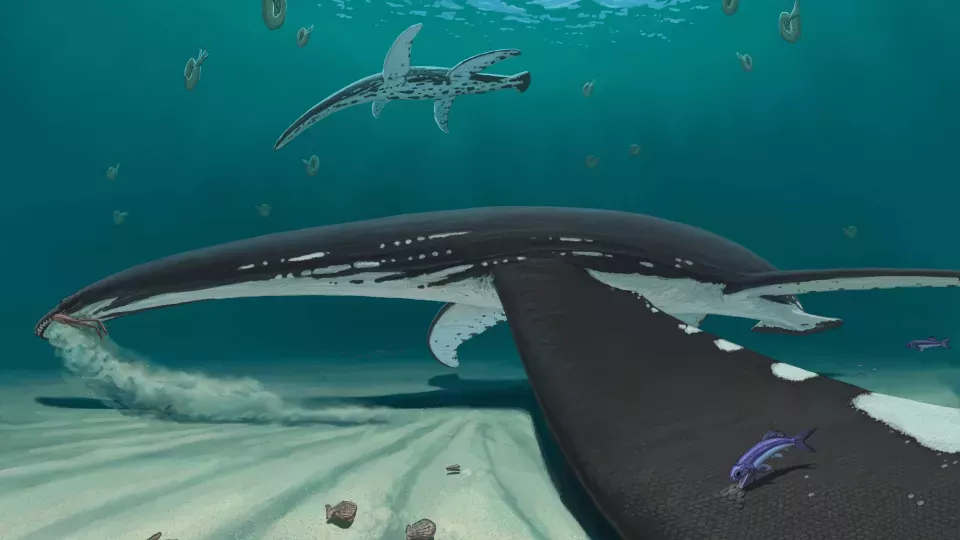
A reconstruction of the plesiosaur, showing the scales on the end of the flippers. Image Credit: Joschua Knuppe/Lund University
Plesiosaur Skin Reveals Scales for the First Time
For the first time, researchers have discovered that plesiosaurs had both smooth and scaly skin, revealing new insights into their movement and biology.
Summary Points
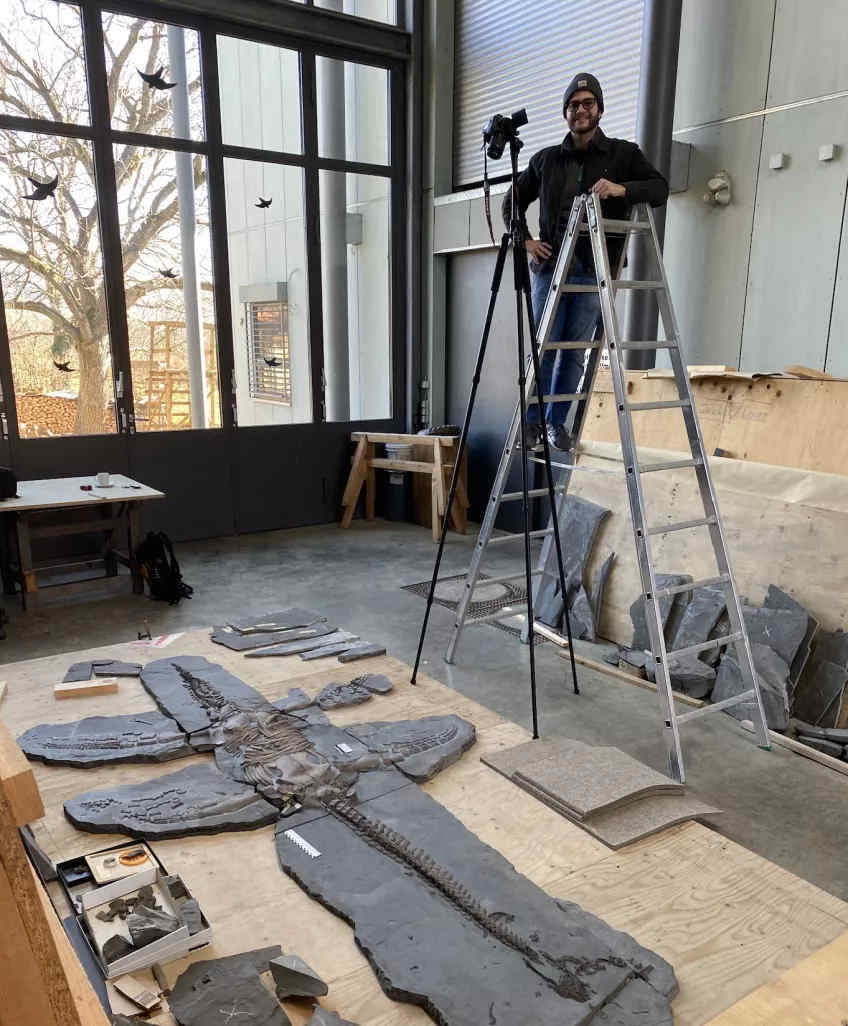
The lead author Miguel Marx photographing the plesiosaur specimen. Image Credit: Lund University
Researchers found the first evidence of both smooth and scaly skin in plesiosaurs.
by their morphology, until now.
A 183-million-year-old fossil from Germany preserved soft tissue for analysis.
Smooth skin likely helped with swimming, while scaly flippers may have aided movement on rough seafloors.
The discovery improves reconstructions of plesiosaurs and their biology.
Fossilized skin cells were remarkably well-preserved, resembling modern skin.
Plesiosaur Skin Reveals Scales for the First Time
This article is based on a new release by Lund University - February 7, 2025, and the Open Access (CC BY 4.0) Journal Article (Marx, Miguel et al., 2025) from Current Biology. (CC BY 4.0)
For the first time, researchers have discovered that plesiosaurs had both smooth and scaly skin. Scientists at Lund University in Sweden analyzed soft tissue from a fossilized plesiosaur, revealing an unprecedented look at the external anatomy of these long-extinct marine reptiles. Their findings suggest that this mix of skin textures may have helped plesiosaurs both swim efficiently and navigate rough seabeds.
Plesiosaurs lived in the oceans for much of the Mesozoic Era, from about 203 to 66 million years ago. These large marine reptiles, which could reach up to 12 meters in length, used four paddle-like flippers to move through the water, similar to modern sea turtles. Until now, little has been known about their skin and external features. However, in a study published in Current Biology, researchers analyzed soft tissue from a 183-million-year-old specimen found near Holzmaden, Germany.
The study found smooth skin on the plesiosaur's tail and scales along the rear edges of its flippers. Researchers believe the smooth skin helped reduce drag, allowing for faster swimming, while the scales may have provided protection when moving along rough seafloors. This combination of textures sheds new light on the biology and movement of these prehistoric animals. The presence of both smooth and scaly skin suggests that plesiosaurs may have occupied a more diverse range of ecological niches than previously thought, potentially interacting with both open-water and seabed environments. Additionally, the variation in skin texture raises questions about how plesiosaurs thermoregulated, as smooth skin could have facilitated heat dissipation, while the scales may have played a role in structural support or camouflage.
The findings also highlight the importance of soft tissue preservation in fossils. "Seeing 183-million-year-old skin cells under a microscope was astonishing - it looked almost like modern skin," said lead author Miguel Marx. These discoveries provide valuable insights into the evolution and adaptations of marine reptiles, helping scientists better understand Earth's ancient past.
Watch the Video by the Author Miguiel Marx:
Video by the Author Miguiel Marx explaining the importance of finding the plesiosaur skin and scales.
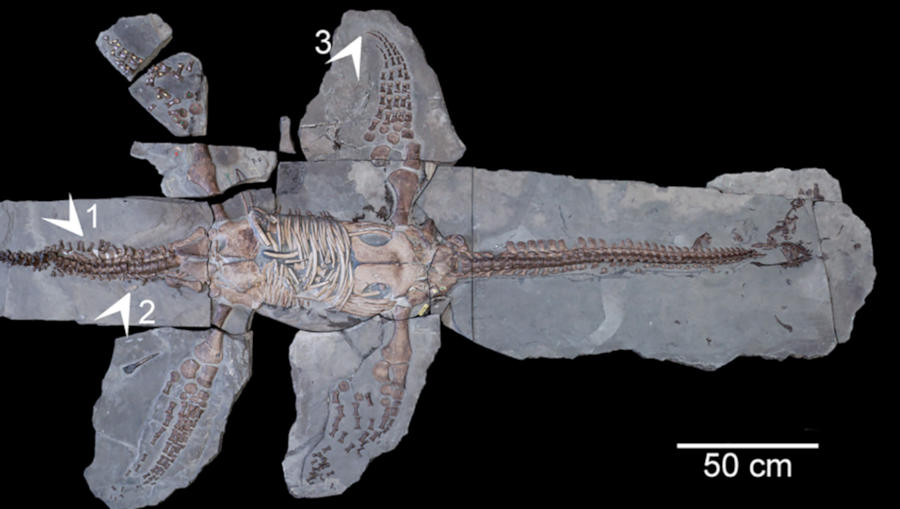
Figure 1A from Marx et al., 2025 - Current Biology showing the areas where the skin and scales were found.
Journal Article:
Marx, Miguel, et al. "Skin, Scales, and Cells in a Jurassic Plesiosaur." Current Biology, vol. 35, no. 4, 2025, Elsevier, https://doi.org/10.1016/j.cub.2025.01.001.
Recommended Dinosaur Books and Educational Items:

High quality Dinosaur teeth by Fossilera

